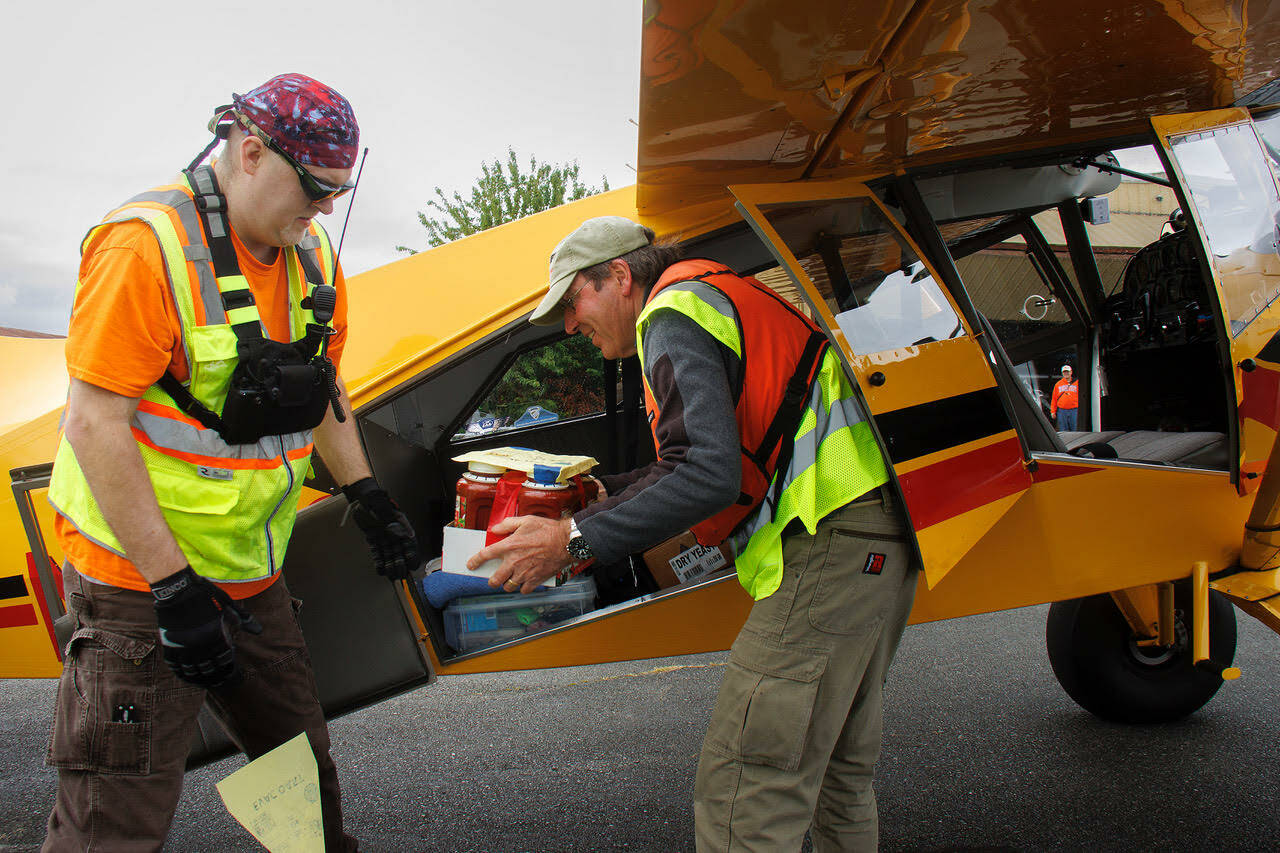Small airplanes buzzed in and out of Whidbey Island airports Saturday as volunteer pilots took part in a giant international disaster drill.
While the disaster was simulated, the supplies were not. Thousands of pounds of food were delivered to food banks across the island.
Island County’s Department of Emergency Management teamed up with several Disaster Agency Response Teams, or DART, to conduct Thunder Run, a drill designed to prepare for the aftermath of a worst-case-scenario disaster, such as a major earthquake.
DART is made up of volunteer pilots who want to work together to help the community in case of a disaster. This is especially important in a place like Whidbey Island and because FEMA could be busy “tackling the main metropolitan areas first,” according to Ron Conlin, the aviation coordinator for the Island County Department of Emergency Management.
Conlin said the islands will likely be on their own for two or three weeks at least.
Conlin has been involved with the DART programs in the Pacific Northwest for about five and a half years and brought the concept to Island County DEM Director Eric Brooks about three years ago.
“We’re participating in the exercise because we do know that general aviation will play a big part in an emergency.” said Kristina Kasper, the emergency management coordinator for Island County.
Thunder Run provides volunteer pilots of DART and emergency workers for Island County training in the field.
“The main thrust behind the drill is to find out what the pilots can do and what they can’t do during a disaster,” Conlin said.
If the Deception Pass Bridge or the ferry docks are damaged during an earthquake or other natural disaster, Whidbey Island would likely rely on airplanes to deliver resources. This drill tested how this could be done.
Airplanes landed and departed all day Saturday at the AJ Eisenberg in Oak Harbor and the Langley Airpark in Langley. About 7,000 pounds of food was dropped off and distributed to food banks, Conlin said.
Some pilots had to make multiple trips to deliver food because their planes can only hold so much.
“Those pilots practice on their own time, their own fuel and resources to participate in these drills that are meant to keep everybody up to date in case there is a major disaster,” Conlin said.
There is a drill every year in a different part of the Pacific Northwest. This year, it is an international drill involving both the U.S. and Canada.
“The main point of this drill is based out of BLI Bellingham and it involves airports in Renton, Walla Walla, Oregon, and airports in between, so it’s a bunch of DART programs that are participating throughout the state, as well as Canada, ” Conlin said.
A production company flown in from Los Angeles will be conducting a documentary on the drill, the largest such international drill on record.
This is the second time Island County has been involved in the Thunder Run. There was a small drill last year but “this is the first, all-out big drill,” Conlin said.
Along with Island County and eight different regional Disaster Agency Response Teams, Naval Air Station Whidbey Island, Community Emergency Response Team volunteers, HAM radio operators and the National Tribal Emergency Management Council all helped to make the drill possible.
Whidbey Island is in earthquake country. The Cascadia Subduction Zone runs from Northern California to British Columbia. Scientists predict that there is about a 37% chance of an earthquake of 7.1 magnitude or more will occur in the next 50 years. Such an event will be felt throughout the Pacific Northwest, according to the USGS.
“We’re doing all this preparation work, but we also need the help of our public and our citizens,” Kasper said. “You know, they’ve got to get themselves as prepared as they can be and they can get more information about that on our Island County emergency management website.”


